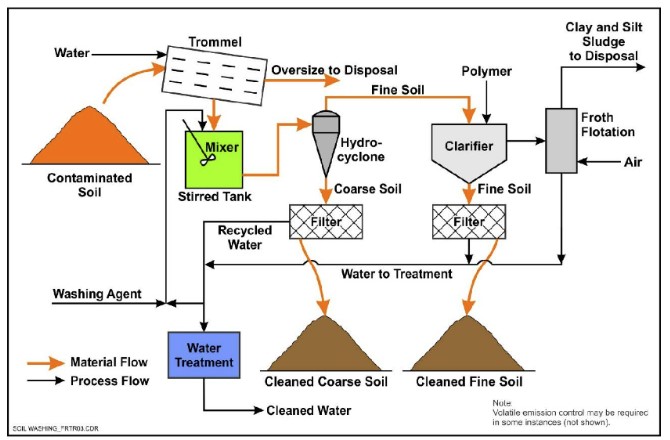Your Overview to PFAS Therapy Technologies and Perks
The prevalence of PFAS contamination in water sources requires an extensive understanding of readily available treatment modern technologies. Each technology not just targets details PFAS substances yet also plays an essential duty in boosting general water top quality and safeguarding ecological integrity.
Understanding PFAS Contamination
Understanding PFAS contamination is important for addressing its pervasive influence on environmental and human health (m270 pfas treatment). Per- and polyfluoroalkyl substances (PFAS) are a team of artificial chemicals extensively used in different industrial and customer items because of their water- and grease-resistant properties. Generally discovered in firefighting foams, non-stick cookware, and water-repellent textiles, PFAS have gone into the setting via production processes, wastewater discharges, and leaching from garbage dumps
Once launched, these materials linger in the setting, leading to widespread contamination of dirt and water sources. Their unique chemical structure, identified by solid carbon-fluorine bonds, provides them resistant to deterioration, resulting in a sensation understood as "for life chemicals." Consequently, PFAS can gather in the human body and the food web, possibly causing unfavorable wellness impacts, including body immune system disruption, developmental problems, and an enhanced risk of particular cancers cells.
Governing companies and health companies are increasingly acknowledging the relevance of PFAS contamination, prompting efforts to monitor, analyze, and mitigate its effects. Understanding the pathways of PFAS contamination is necessary for notifying public plan and developing effective methods to protect both ecological and human health.
Review of Therapy Technologies
Numerous therapy innovations have actually been created to resolve the difficulties presented by PFAS contamination in water and soil. These modern technologies can be generally identified into several categories, each with its unique systems and effectiveness in eliminating PFAS compounds.
One prominent approach is ion exchange, which uses material products to catch and get rid of PFAS from contaminated water. Another technology, progressed oxidation processes (AOPs), employs strong oxidants and ultraviolet light to damage down PFAS right into much less dangerous materials.

Activated Carbon Purification
Activated carbon filtration is a widely made use of method for the removal of PFAS from infected water, recognized for its capacity to adsorb a wide array of natural compounds. This technology employs activated carbon, a highly permeable material with an extensive surface, which helps with the binding of PFAS molecules through physical adsorption. The performance of turned on carbon in removing PFAS is affected by a number of variables, consisting of the sort of carbon used, the contact time, and the concentration of PFAS in the water.
One of the benefits of activated carbon filtering is its convenience; it can be applied in numerous setups, such as granular activated carbon (GAC) systems or powdered published here turned on carbon (PAC) systems. GAC systems are normally used in larger-scale applications, while PAC can be utilized in smaller sized or short-term arrangements. Furthermore, the innovation is reasonably easy to operate and preserve, making it obtainable for several water therapy facilities.

Ion Exchange Equipment
Ion exchange systems represent an additional reliable approach for the elimination of PFAS from polluted water, complementing techniques like activated carbon purification. These systems operate on the principle of exchanging ions in the water with ions held on a resin product. Ion exchange materials can be especially formulated to target the adversely billed PFAS substances, successfully catching them and enabling cleaner water to travel through.
Among the main benefits of ion exchange systems is their capability to eliminate a large range of PFAS, including both long-chain and short-chain versions. This convenience makes them ideal for various applications, ranging from municipal water therapy to industrial procedures. Furthermore, ion exchange systems can commonly achieve click here now reduced detection restrictions for PFAS contrasted to a few other treatment methods, therefore enhancing water quality.
Nonetheless, it is necessary to keep track of and manage the regrowth of ion exchange media, as the efficiency can decline with time due to saturation. Proper upkeep and substitute of the resin are crucial for maintaining the system's performance. Overall, ion exchange systems provide a trustworthy and efficient solution for PFAS elimination, contributing significantly to safe alcohol consumption water standards and ecological protection.
Advanced Oxidation Processes
Advanced Oxidation Processes (AOPs) use powerful oxidants to efficiently break down PFAS substances in contaminated water. These ingenious therapy approaches create highly responsive types, such as hydroxyl radicals, that can break down intricate PFAS molecules into much less dangerous results. m270 pfas treatment. AOPs normally employ combinations of ultraviolet (UV) light, ozone, hydrogen peroxide, or Fenton's reagent, boosting the oxidation capacity and boosting deterioration performance
The key advantage of AOPs hinges on their ability to target a wide variety of PFAS compounds, including both long-chain and short-chain variants. This convenience is essential, as PFAS browse this site contamination often entails combinations of various substances with differing chemical frameworks. AOPs can be integrated right into existing water treatment systems, making them a sensible remedy for several towns and industries.
Nevertheless, the application of AOPs can be resource-intensive, requiring careful factor to consider of operational prices and power consumption. Furthermore, while AOPs are reliable in damaging down PFAS, they may not totally remove all by-products, demanding more treatment actions - m270 pfas treatment. In general, AOPs stand for an appealing method for attending to PFAS contamination, adding to cleaner water sources and improved public health defense

Conclusion
In verdict, resolving PFAS contamination calls for a thorough understanding of offered treatment modern technologies. Triggered carbon purification, ion exchange systems, and progressed oxidation processes each present one-of-a-kind benefits for efficiently eliminating these damaging compounds from water sources. By choosing the appropriate modern technology, areas can enhance water quality, protect public health and wellness, and reduce the environmental risks connected with PFAS exposure. Proceeded study and execution of these methods are vital for effective monitoring of PFAS contamination in influenced areas.